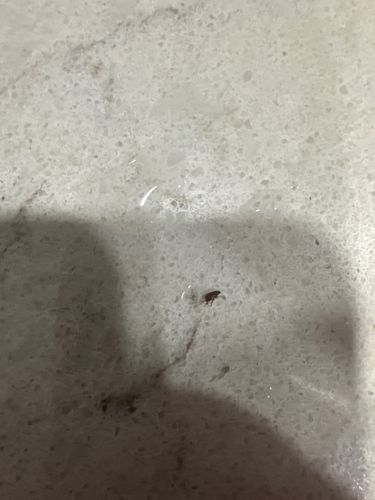Flea (possibly Cat flea or Dog flea)
Scientific Name: Ctenocephalides felis (Cat flea) or Ctenocephalides canis (Dog flea)
Order & Family: Order: Siphonaptera, Family: Pulicidae
Size: 1-3 mm

Natural Habitat
Fleas typically live on the bodies of warm-blooded animals (hosts) such as cats, dogs, rodents, and humans. They also reside in the host's environment, including bedding, carpets, cracks in floors, and furniture, especially in areas where infested animals rest.
Diet & Feeding
Adult fleas are obligate hematophagous parasites, meaning they feed exclusively on the blood of their hosts. Larvae feed on organic debris, including adult flea feces (which consists of dried blood).
Behavior Patterns
Fleas are excellent jumpers, able to leap significant distances relative to their size. They are attracted to body heat, movement, and the carbon dioxide exhaled by potential hosts. Their life cycle includes egg, larva, pupa, and adult stages. Adults typically live for several weeks to months, continuously feeding and laying eggs on their host. Flea larvae are legless and eyeless and prefer dark, moist environments.
Risks & Benefits
Potential risks include causing itchy bites, allergic reactions (flea allergy dermatitis in pets), and transmitting diseases such as tapeworms (Dipylidium caninum) and Rickettsia typhi (murine typhus) to humans. In severe infestations, pets can suffer from anemia due to blood loss. Generally, there are no known benefits of fleas to humans or the ecosystem, other than serving as a food source for some predators.
Identified on: 9/12/2025